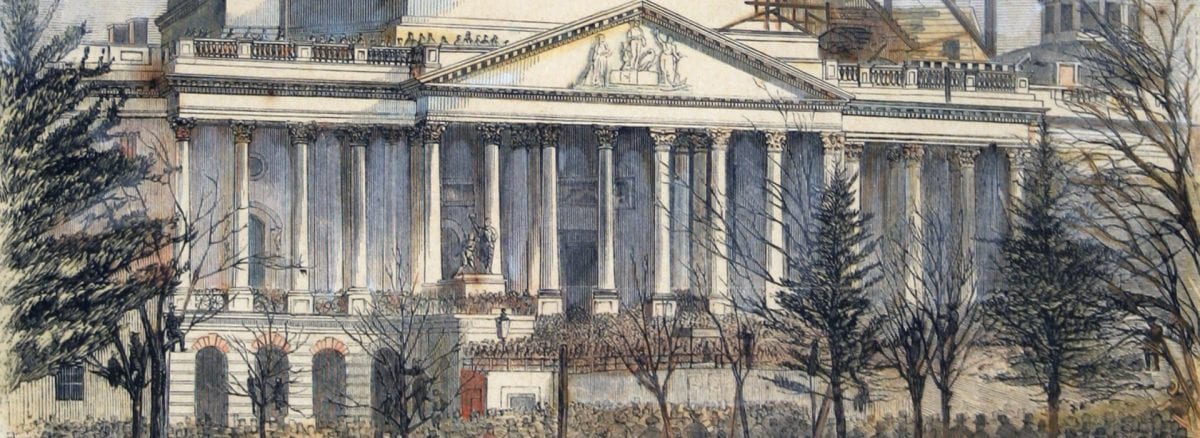Tension in the nation’s capital was extremely high leading up to Abraham Lincoln’s inauguration on March 4, 1861. Seven Southern states had seceded from the Union, and credible threats had been made to the president elect’s life. On Inauguration Day, the commanding general of the U.S. Army, Winfield Scott, oversaw an elaborate security operation.
Lincoln and outgoing President James Buchanan rode to the Capitol in an open carriage, surrounded by companies of infantry and cavalry. Riflemen kept watch on rooftops along the route. At the Capitol, the inauguration platform on the East Portico was guarded by a D.C. battalion, sharpshooters were stationed at every window in the North and South wings, and special police were posted among the crowds.

At the time, the Capitol was still under construction. Architect Thomas U. Walter had been engaged in 1851 to redesign it with expanded chambers for Congress, which was growing rapidly as more states joined the Union. Walter added massive new wings and a dome inspired by St. Isaac’s Cathedral in St. Petersburg, Russia. Construction continued during the Civil War with endorsement from Lincoln, who stated: “If people see the Capitol going on, it is a sign we intend the Union shall goon.” The building was finished in 1863.
This hand-colored image of Lincoln’s inauguration shows the steam-powered derrick and boom used to construct the dome. Reproduced from a photograph using a wood engraving, it was published in Frank Leslie’s Illustrated Newspaper on March 16, 1861. In a time before radio and television, publications like this one allowed people to witness events from afar.

